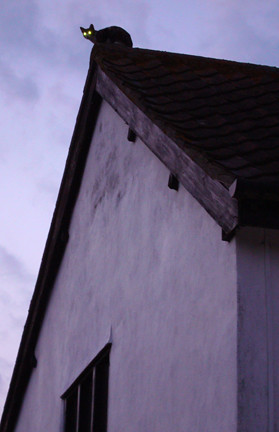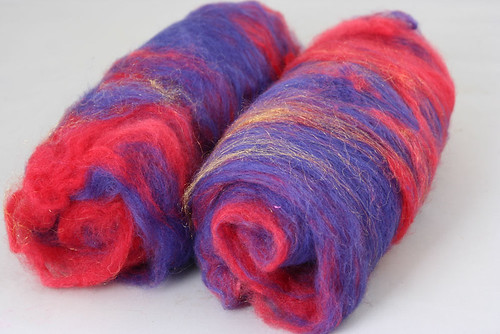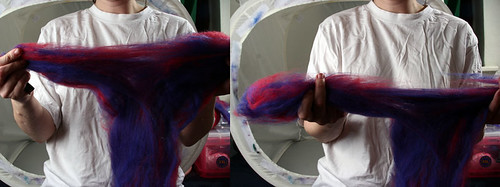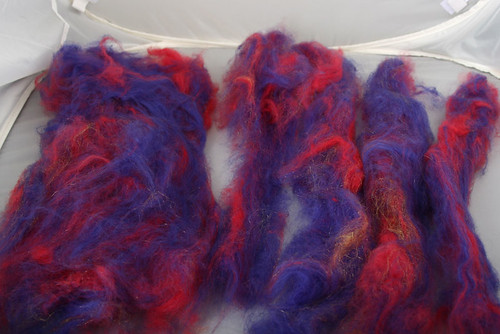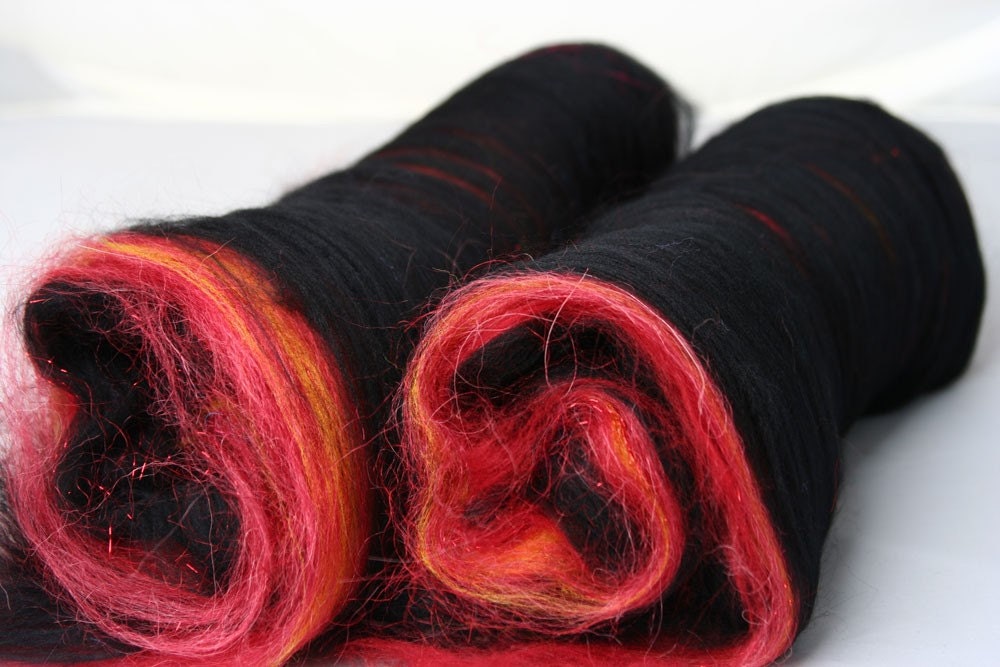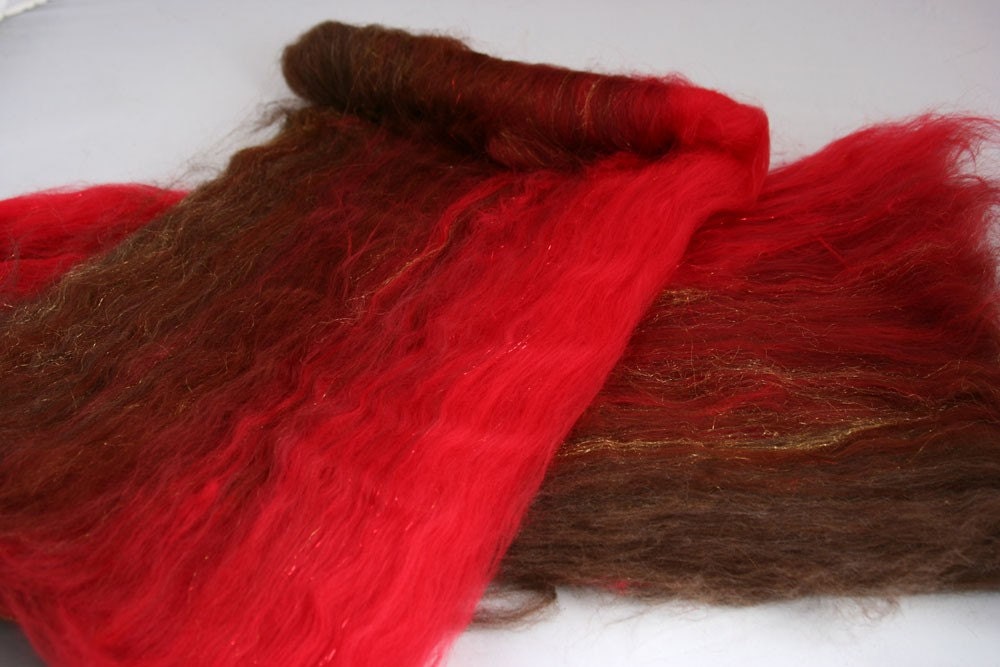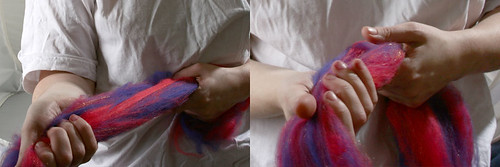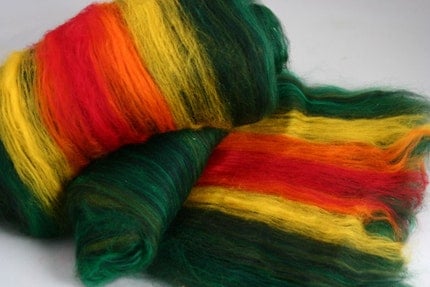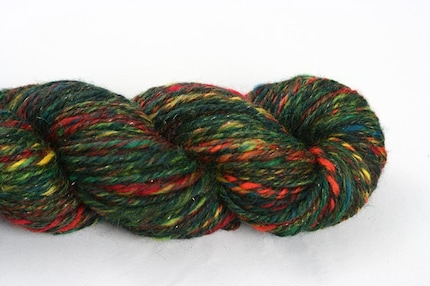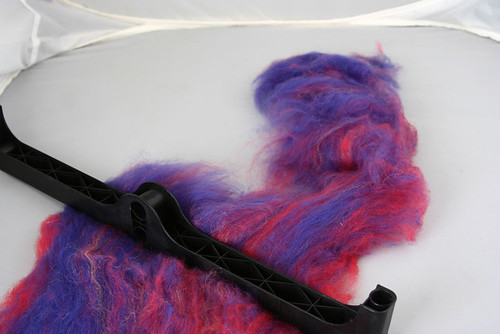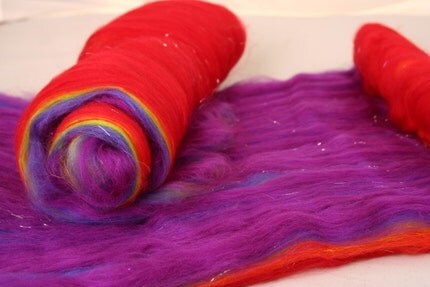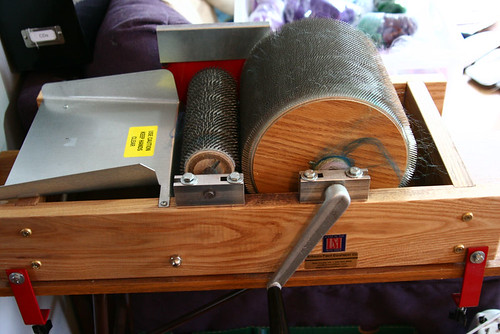Whenever I groom my cats, unless the bin is right next to me to throw away the fur, I find myself spinning it with my fingers, then twisting it up and plying it back on itself, over and over until i have a short thick length. Which i then throw to the nearest cat who plays with it excitedly. Oh, except that one time that i wrapped some wire round it and Gren and Wormy played around with creepy cat fur handlebar moustaches. So a while ago I decided I wanted to spin some proper yarn out of cat fur, so i could knit it into a cat toy. I mentioned this wish to my dad, and he started collecting the fur from his cats.
Last week he remembered to give me his collection. 26g of it. It’s been kept in a plastic baggie, so it was pretty compressed in the photo, but trust me, that’s a LOT of cat fur.
I didn’t want to spin it on its own because the ends seemed a little spikey, and it wouldn’t make a very good yarn anyway, as it’s got no crimp, so I decided to blend it about 50:50 with wool, and ended up choosing some humbug BFL that was similar colours. I made a few rolags before I realised I don’t particularly like hand carding, so did the rest on the drum carder. After 3 passes it was pretty evenly blended. Another couple would probably have made it super smooth, but I don’t mind if it’s a bit lumpy and bumpy.
I decided that there is way too much there for just a silly toy mouse or something, so I’m instead going to make a stuffed toy kitty as a present for my dad. Hopefully he’ll appreciate it as something to remember the kitty who contributed most of the fur by, as she died a few months ago, rather than thinking ‘ew gross’.
I am going to wheel spin most of it, but I was feeling too tired to sit at the wheel tonight, so I spindle spun a little of it in bed. It’s actually surprisingly soft and the spiky ends of the fibres aren’t as noticeable when spun, though this may well change when it’s plied.
It’s not the nicest or most fun thing I’ve ever spun, but it’s not difficult, and it’s certainly interesting. Turtle finds it especially interesting; while i was carding the rolags she came and put her head in the bowl of fibre and was sniffing really deeply with her mouth open. After making a handful of rolags I realised I needed a nap, and later this evening gren noticed one of the rolags was a little messed up and sitting at the end of my bed, so she must have liked it so much she stole it to play with.
Aaaaaand now, batcat! Completely unrelated to the above, but it made for an awesome title, and I like this pic so I’m going to share.
Turtle’s brother lives with my parents. He has learned that they have bats living in their roof. He has also learned that if he sits really quietly on the roof at dusk, he can hear them coming and catch them as they fly out. It’s really fucking high, I have no idea how he manages to get up there, but he’s super cute. There was a period of about a week when he brought them a dead bat every single night, but I think he’s got bored of that now, which is good, cos bats are so awesome and soft and cute, and don’t deserve to be nommed by naughty cats.
Even more unrelated to the above, I read a thread on LSG earlier that was talking about disgusting things found in kitchen cabinets, and I remembered that there was a jar of ‘seafood salad’ in my fridge that Nik had bought for Alice about 5 years ago when she was in her ‘eating gross things and blogging about it’ phase. I bravely opened it (in the garden in case it smelled gross), and these two little cuties were in there. I love mini squids!




